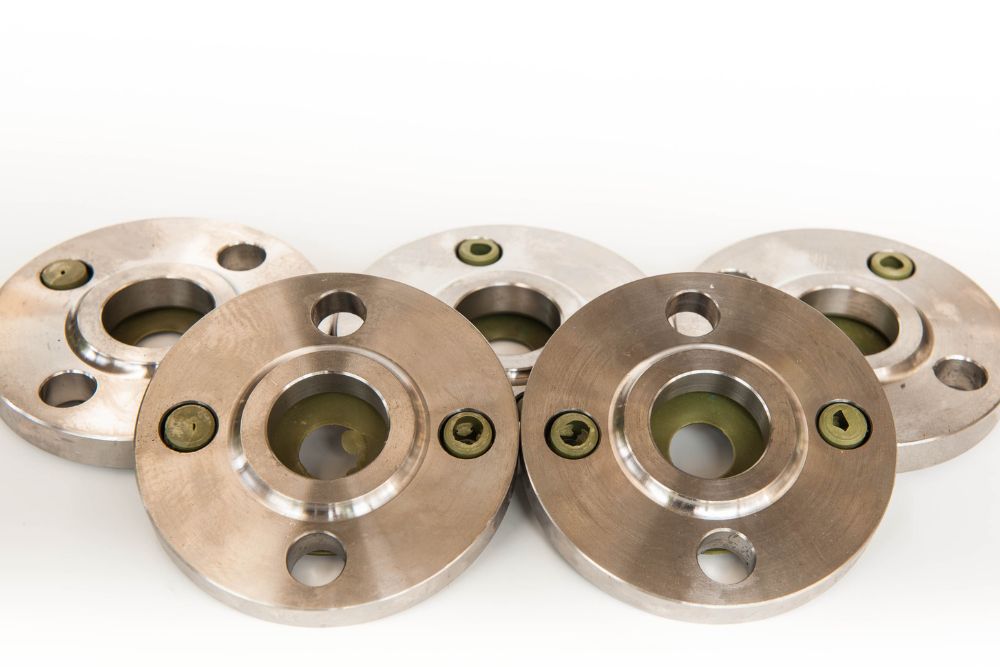ASTM A182 F317
ASTM A182 F317 Stainless Steel Flanges
Emirerri Steel is a trusted manufacturer and global supplier of ASTM A182 F317 Stainless Steel Flanges, engineered to deliver exceptional corrosion resistance, mechanical strength, and durability in highly aggressive environments.
The 317 stainless steel (UNS S31700) grade is a molybdenum-bearing austenitic stainless steel that offers superior resistance to pitting, crevice corrosion, and chemical attack compared to conventional 304 and 316 grades. Designed for chemical processing, pulp and paper, marine, and offshore industries, these flanges ensure long-lasting performance even under extreme service conditions.
Key Features
Enhanced Corrosion Resistance: Higher molybdenum content ensures superior resistance to chlorides and acids.
High Strength & Durability: Excellent mechanical strength under both ambient and elevated temperatures.
Excellent Weldability & Fabrication: Easily welded and formed using standard procedures.
Resistant to Pitting & Crevice Corrosion in chloride-bearing environments.
Good Oxidation Resistance up to 850°C (1560°F).
Low Carbon Content: Minimizes carbide precipitation during welding.

Specification
| Standard | Details |
|---|---|
| Product Standard | ASTM A182 / ASME SA182 |
| Grade | F317 |
| UNS Number | S31700 |
| EN / DIN Equivalent | X5CrNiMo17-12-2 / 1.4449 |
| Type | Austenitic Stainless Steel |
| Manufacturing Process | Forged / Rolled / Heat Treated |
| Delivery Condition | Solution Annealed |
| Available Forms | Slip-On, Weld Neck, Blind, Socket Weld, Lap Joint Flanges |
Equivalent Grades
| Standard | Equivalent Grade |
|---|---|
| UNS | S31700 |
| EN/DIN | 1.4449 |
| BS | 317S16 |
| JIS | SUS 317 |
| AFNOR | Z3CND17-12-03 |
Available Sizes
| Type of Flange | Size Range |
|---|---|
| Weld Neck (WN) | ½” to 48” (Class 150 – 2500) |
| Slip-On (SO) | ½” to 48” |
| Socket Weld (SW) | ½” to 4” |
| Blind (BL) | ½” to 48” |
| Lap Joint (LJ) | ½” to 48” |
| Threaded (TH) | ½” to 4” |
ASTM A182 F317 Chemical Composition
| Element | Percentage (%) |
|---|---|
| Carbon (C) | 0.08 max |
| Manganese (Mn) | 2.00 max |
| Silicon (Si) | 1.00 max |
| Chromium (Cr) | 18.00 – 20.00 |
| Nickel (Ni) | 11.00 – 15.00 |
| Molybdenum (Mo) | 3.00 – 4.00 |
| Phosphorus (P) | 0.045 max |
| Sulfur (S) | 0.03 max |
| Nitrogen (N) | 0.10 max |
| Iron (Fe) | Balance |
ASTM A182 F317 Mechanical Properties
| Property | Value |
|---|---|
| Tensile Strength (MPa) | 515 min |
| Yield Strength (MPa) | 205 min |
| Elongation (%) | 35 min |
| Hardness (Brinell) | 217 max |
| Modulus of Elasticity (GPa) | 193 |
ASTM A182 F317 Physical Properties
| Property | Value |
|---|---|
| Density | 7.9 g/cm³ |
| Melting Point | 1370 – 1395°C |
| Thermal Conductivity (at 100°C) | 16.3 W/m·K |
| Electrical Resistivity (20°C) | 0.74 µΩ·m |
| Coefficient of Expansion (20–100°C) | 16.0 µm/m·°C |
Types of F317 Stainless Steel Flanges
Weld Neck Flanges (WN)
Slip-On Flanges (SO)
Socket Weld Flanges (SW)
Blind Flanges (BL)
Lap Joint Flanges (LJ)
Threaded Flanges (TH)
Custom Forged Flanges
Corrosion Resistance
ASTM A182 F317 flanges exhibit outstanding corrosion resistance in acidic and chloride-containing environments. The higher molybdenum content improves resistance to pitting, crevice corrosion, and stress corrosion cracking, especially in marine and chemical process environments.
Heat Resistance
Excellent oxidation resistance in intermittent service up to 870°C and continuous service up to 925°C.
Retains mechanical strength at elevated temperatures without scaling or deformation.
Heat Treatment
Solution Annealing: 1010°C to 1120°C, followed by rapid cooling in water or air.
This treatment ensures uniform corrosion resistance and restores mechanical properties after fabrication.
Welding
F317 can be welded using TIG, MIG, or Shielded Metal Arc Welding (SMAW) methods.
Recommended Filler Metals: ER317, ER317L, or matching composition.
Post-Weld Annealing: Usually not required unless severe service conditions are expected.
Fabrication
Excellent formability and machinability using conventional tools.
Cold forming operations are easier due to high ductility.
For maximum corrosion resistance, final annealing and pickling are recommended after fabrication.
Applications
Chemical & Petrochemical Processing Plants
Marine & Offshore Engineering
Pulp & Paper Industry
Heat Exchangers & Condensers
Pollution Control Equipment
Desalination Plants
Oil & Gas Processing Units